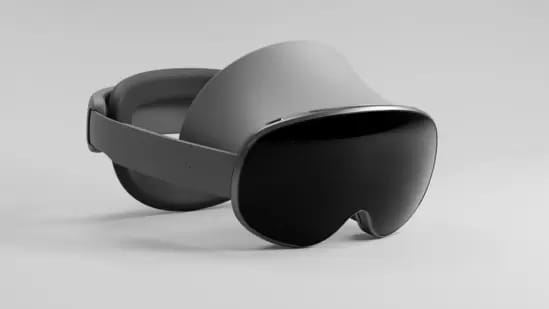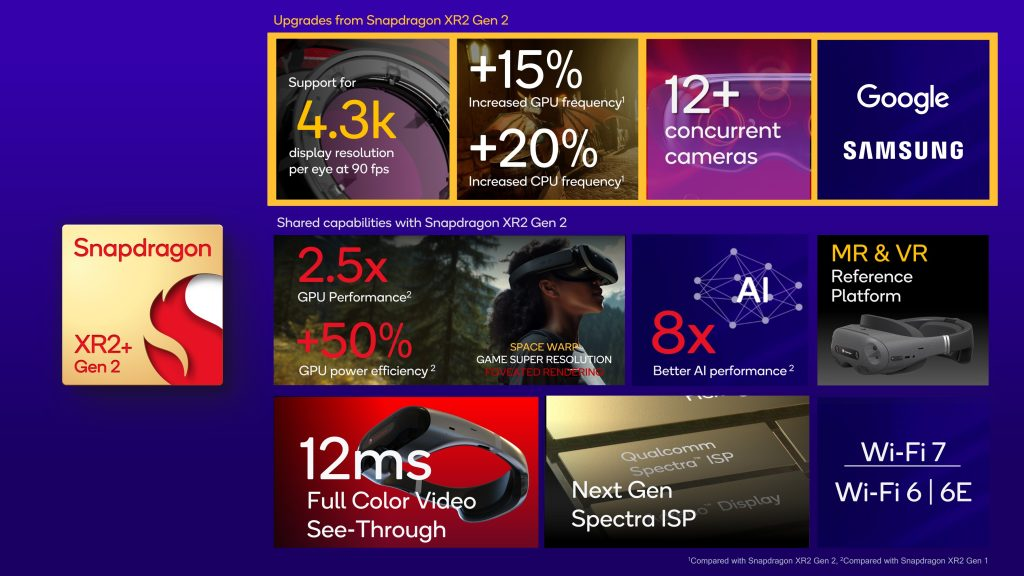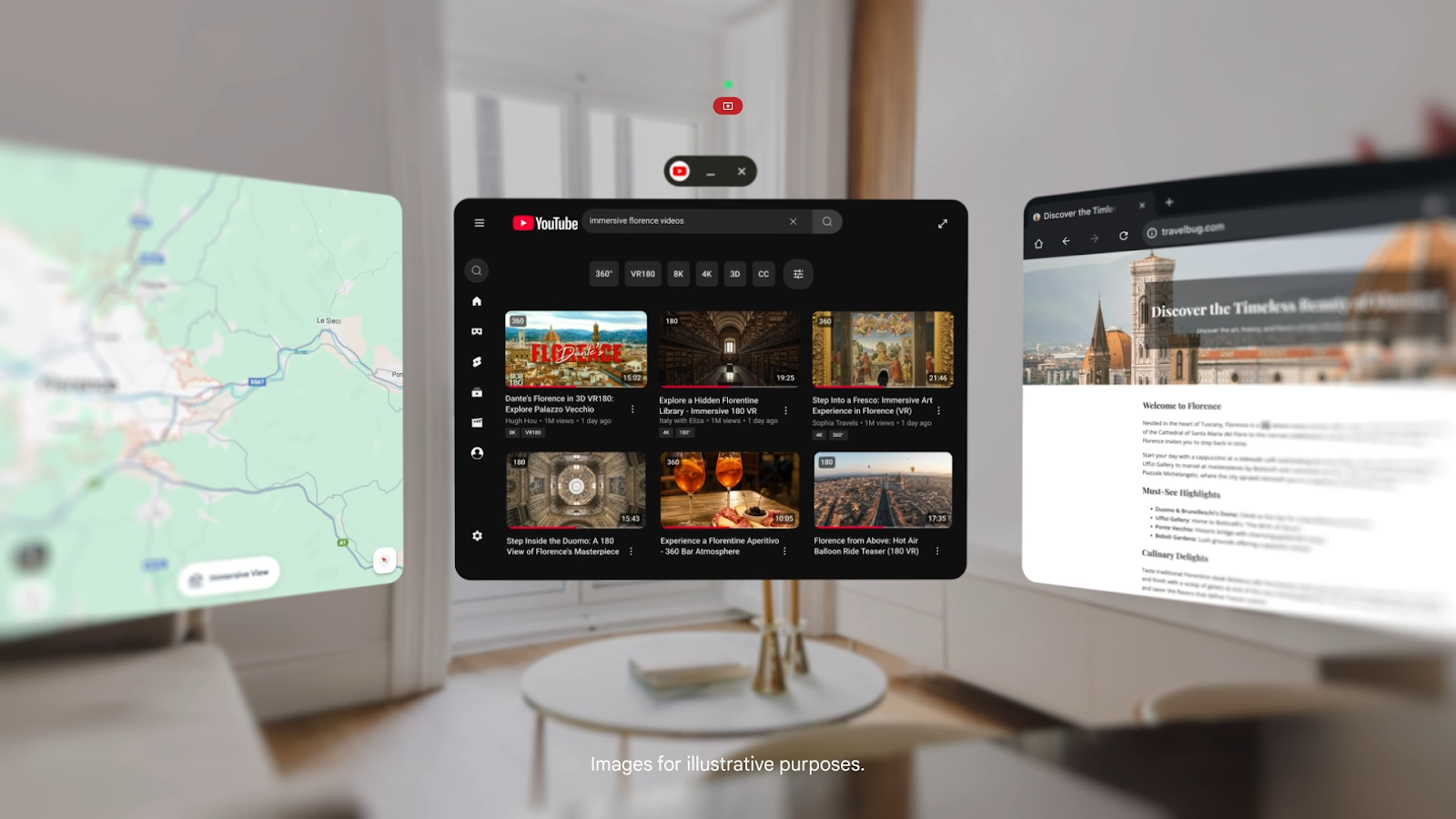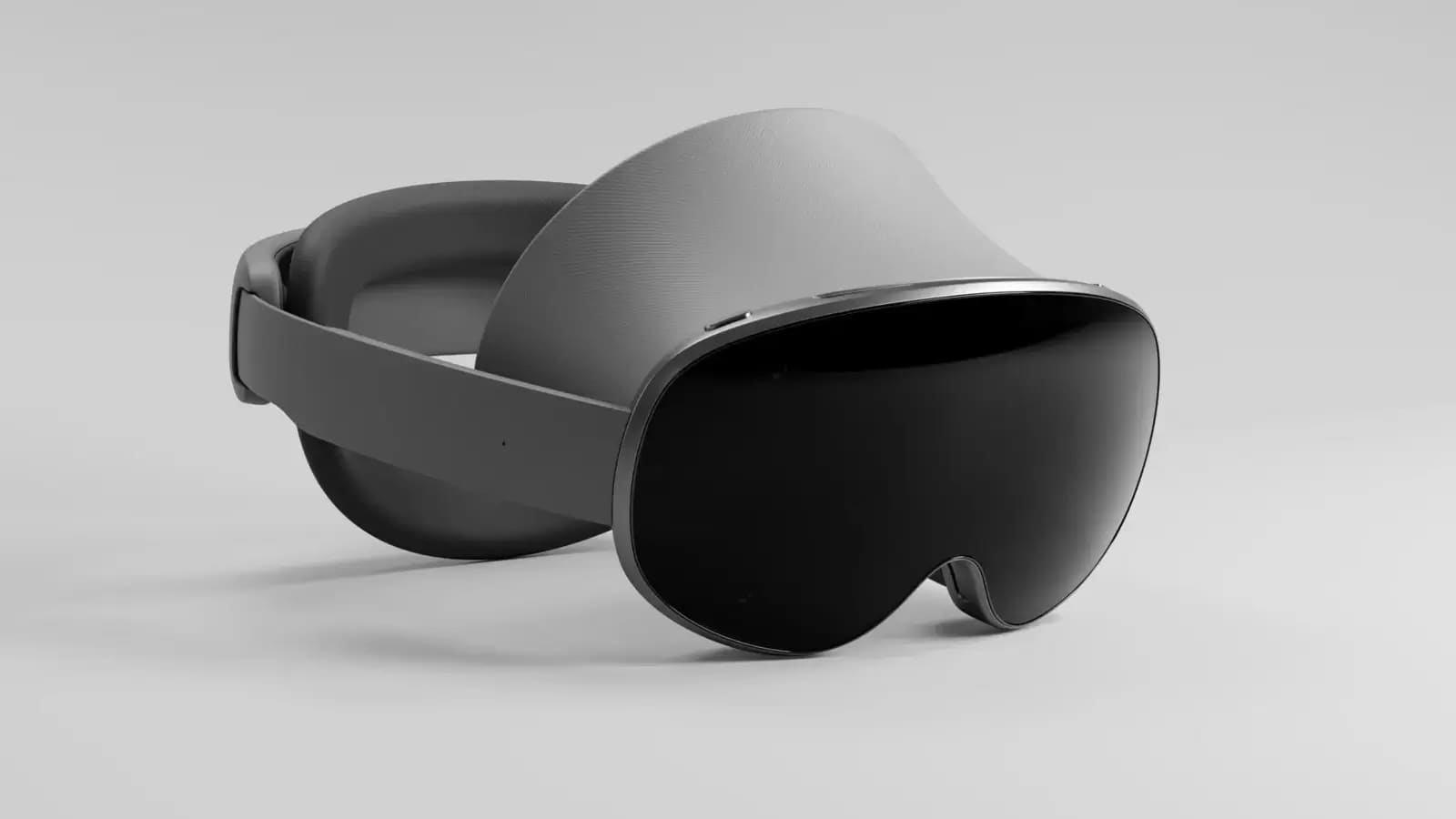Samsung, Google and Qualcomm have all come together to launch Android’s response to Apple’s Vision Pro. ‘Project Moohan’ is the code name given to Samsung’s extended reality (XR) headset. Moohan means infinity in Korean, and it reflects Samsung’s ambition to deliver limitless immersive experiences within the XR space. With this offering, Samsung intends to join the same space as Apple’s Vision Pro and Meta’s Quest 3. While there are many VR headsets, they are not quite in the same league as Vision Pro or Quest 3. The Samsung Moohan headset will be the first Android XR headset to launch in the market.
 The headset’s design bears a striking resemblance to the Apple Vision Pro.(Samsung)
The headset’s design bears a striking resemblance to the Apple Vision Pro.(Samsung)
The headset’s design bears a striking resemblance to the Apple Vision Pro — and to be fair, if you’re going to take inspiration, Apple’s design is a strong place to start. There are, however, some key differences. For instance, unlike the Vision Pro, Moohan doesn’t display the user’s eyes externally. Its battery cable is compatible with any external power bank, offering more flexibility. While the Vision Pro relies heavily on eye tracking for control — alongside hand, touch, and peripheral inputs — Moohan leans into voice control as its primary interface, thanks to its deep integration with Gemini. Still, it retains support for eyes, hands, and peripherals, much like Apple’s approach.The Moohan also features a touchpad on the right strap for added input. Its design prioritizes balanced weight distribution, with an adjustment knob at the back to customize the fit. Both the top and bottom light seals are detachable and optional, allowing users to remain more connected to their physical surroundings if desired.
The main components include a powerful Qualcomm Snapdragon XR2+ Gen 2 processor, a chip specifically optimised for extended reality that boasts a 20% higher CPU and 15% higher GPU frequency compared to its predecessor, enabling smoother performance and richer graphics. Visuals are delivered through high-resolution 4K micro-OLED panels which are rumoured to be supplied by Sony.

Qualcomm is working with Google to extend the platform and hence we can expect many more OEM partners like Lynx, Sony and XREAL to develop Android XR based devices. This device is the first to be built on the Android XR platform, a special OS by Google for extended reality (XR) with AI as its centerpiece. This implies compatibility with Google Playstore is a given. Apart from this there are special Spatial apps that can be used on the Moohan tailored for the Mixed reality experience.

Both Samsung and Google are not new to the XR/VR space. Samsung’s early Gear VR initiative, launched in 2014, played a key role in bringing mobile VR to the hands of consumers, offering valuable insights into both hardware and content. Around the same time, Google experimented with VR through Cardboard and Daydream, before ultimately shifting focus to smartphone-based AR with ARCore and phasing out Daydream. These initiatives have paved the way for the more ambitious Project Moohan and combines Samsung’s evolved hardware with Google’s Android XR platform and Gemini AI, aiming to deliver a truly unified and immersive mixed reality experience.
The AI Edge

Though the form factor and the hardware may look similar, what would likely set this device apart is Gemini integration. Gemini can now see & hear the real world through the cameras and the mics in the headset. This enables the user to ask contextual queries about what the user is seeing or hearing in the real world. Gemini can even carry on a conversation with the user. It remains to be seen what kind of a memory Gemini will be endowed with. Google claims Gemini can understand your intent, help you plan, research topics and guide you through various tasks. Gemini can be accessed through the headset at any point with a dedicated button or a hand gesture which will enable a multimodal conversational experience through the headset.
Imagine a scenario where you have your AI-based personal fitness trainer on your Moohan, gaming with your friends across the globe, learning to drive in a safe setting. This form factor is suited for use within a relaxed home or office environment. Productivity and entertainment applications will likely shine on the Moohan given the level of immersion and capabilities. For portable applications, AR/AI Glasses will be more suitable like we have seen on the Meta Rayban.
After some delays, the release of the product has been pushed to late 2025 and will be first targeted at developers building for the Android XR platform. While the Apple vision pro costs $3499, and the Meta Quest 3 starts at $499, it will be interesting to see at what price Samsung positions Moohan, as it is marketed as a premium product with AI features. It is expected to cost somewhere between the two and the resultant lower price point should enable more people to have access to the device.
Authored by: Varun Krishnan
